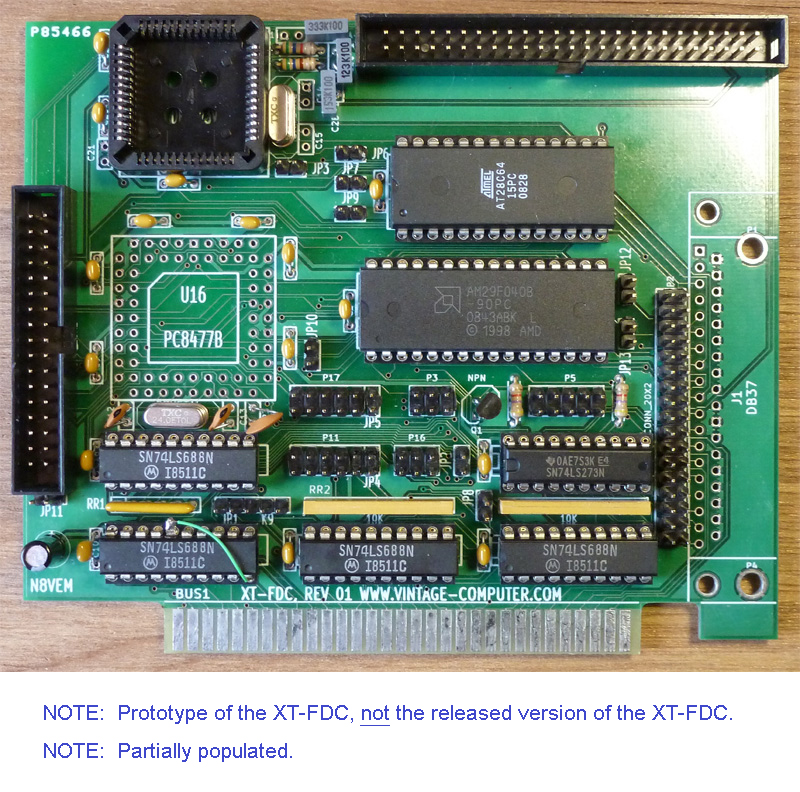Optional ROM Drive
Per the following, 4 of 6 tests were completed.
I need to work out now how to flash the AM29F040 (fitted to XT-FDC) from DOS.
-----------------------------------------------------------------------------------
TEST 1: ADDRESS TEST 1 oF 2
a) Created an 512 KB binary file, where:
* First 8 KB block filled with byte 00
* Second 8 KB block filled with byte 01
* Third 8 KB block filled with byte 02
...
* Last 8 KB block filled with byte 3F (63 decimal)
b) Using an EPROM programmer, flashed that file into an AM29F040 chip.
c) Fitted AM29F040 to XT-FDC.
d) Set P5 jumpers and JP7 for a ROM base address of C8000.
e) Verified via a custom DOS program that each 8 KB block ('selectable ROM') in the AM29F040 read as expected. The pseudo code was:
for each of the 63 'ROMs'
{
select the 8KB ROM .............. (comment: via an appropriate write to port 3F6h )
read entire 8KB ROM contents
report error if any byte read not the same as the ROM # (e.g. ROM #4 [logical] expected to contain bytes of 04 )
}
f) Using an EPROM programmer, changed one byte in the AM29F040.
g) Verified that my code detected that byte (i.e. in order to partially check my program's integrity).
-----------------------------------------------------------------------------------
TEST 2: READ DATA TEST
a) Using an EPROM programmer, modified first 18 bytes of AM29F040 to be:
00 / FF
01 / 02 / 04 / 08 / 10 / 20 / 40 / 80 (walking one)
7F / BF / DF / EF / F7 / FB / FD / FE (walking zero)
b) Fitted AM29F040 to XT-FDC.
c) Via DEBUG, verified that the first 18 bytes were as expected.
-----------------------------------------------------------------------------------
TEST 3: ADDRESS TEST 2 oF 2 (BASE ADDRESS OF 'SELECTABLE' 8KB ROM)
One of the things verified by test #1 was the generation of /CE on the AM29F040.
But it was done only using one possible base address, as selected by jumpers on P5 and by JP7.
Checked the card at various addresses, verifying that:
* ROM appeared at the selected address; and
* ROM did not also appear elsewhere.
Addresses checked: AA000/C8000/CA000/CC000/CE000/D0000/D2000/E0000
-----------------------------------------------------------------------------------
TEST 4: ROM ENABLE TEST (JP8)
Verified that removing JP8 resulted in the ROM no longer being 'seen'.
-----------------------------------------------------------------------------------
TEST 5: FLASH TEST
<pending>
-----------------------------------------------------------------------------------
TEST 6: WRITE ENABLE TEST (JP9)
<pending>
-----------------------------------------------------------------------------------

